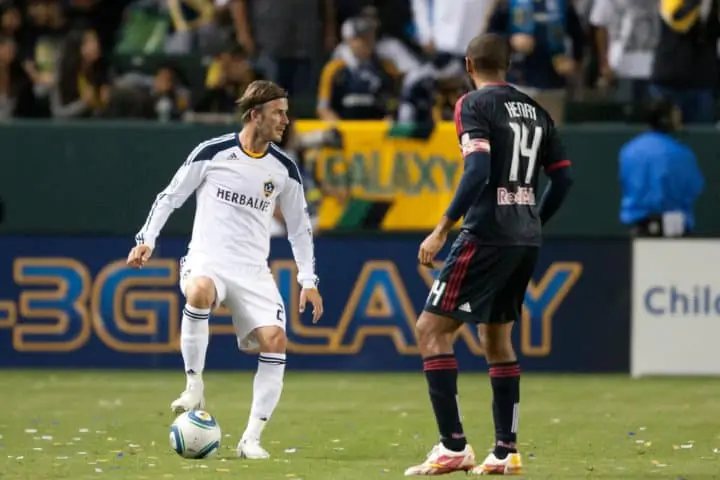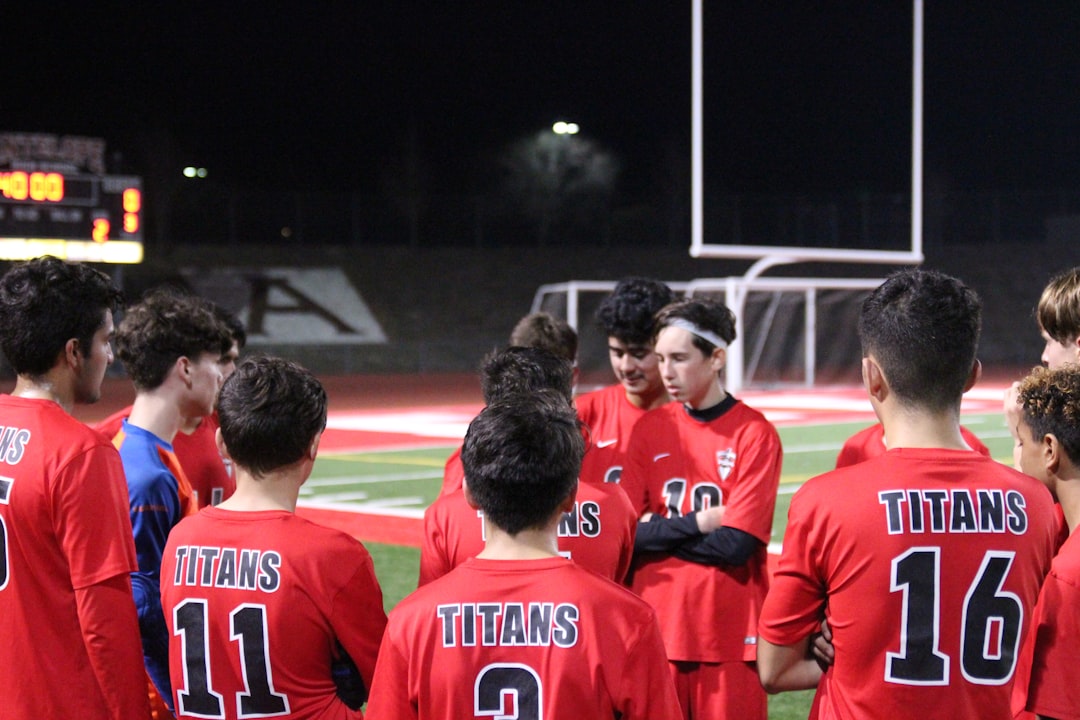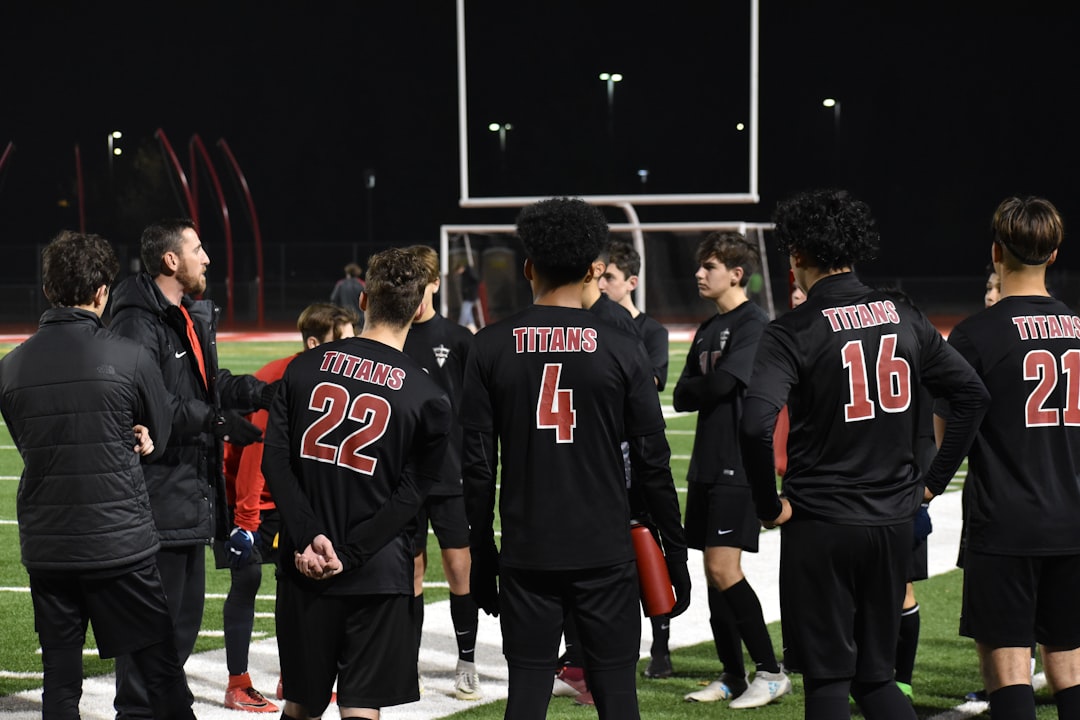Share the post "How Do Soccer Players Communicate? (Here’s How)"
Soccer players can communicate with a glance, hand signal, shout, or wink. Soccer games require communication from the players to operate. The top players direct the play without the opposition knowing.
Soccer has become more competitive, forcing players to communicate more inventively.
Even lip readers from the opposition and the press are watching the players. To see if they can get an insight into what’s being said.
Some soccer player knows what their teammate is doing, just from training with them every day. A pattern of play is a way of knowing what someone will do.
There are many other times during a game when players need to get a message to another player to increase their chance of winning.

How do soccer players communicate with each other?
Soccer players communicate with each other by holding up their hand, pointing, moving a hand towards them, a shout, a whistle, a wink, or a motion of their heads.
Within the field, there are previously trained movements and a tactic that the manager explained before the match.
So that during the match, communication is limited to short and clear messages that can be transmitted even with gestures and signals.
Outside the field, it’s much easier since communication can be in different ways in the language with which they feel most comfortable or mixing words between several languages.
When a corner kick is taken, the kicker raises a hand to tell their teammates where they’re aiming the ball. This is known from practice in training.
- A tap on the should tell a player when to make a run, which frees up space for another player to go into.
- A look into an open space can be a signal for a player to play a through ball.
- A point to the feet can instruct another player to play the ball directly to their feet.
- A slight head motion in one direction can indicate that a player wants someone to move up the field.
All of these ways of communicating are a form of practice. The players know from the training field what their teammate is suggesting with the action they make.

How does a coach communicate with the players?
A coach will communicate by shouting orders, telling a player on the sidelines, using hand signals, or even with a piece of paper.
During training, a coach can speak to the players to instruct them on the type of play they want. But it becomes more complicated on the field during a game.
A coach wants the players to know what to do, but they don’t want to share information with the opposition.
The main form of communication during a game is for the coach to shout orders onto the field, or use hand signals if the message is discrete.
It happens on regular occassions where a manager sends on a substitution and they give that player a written note.
That player takes the piece of paper onto the field to share the message with their teammate.
Team Communication
A team interacts through the team captain. Their job is to focus on the players and have them working as a team.
This issue must be handled well since poor communication can greatly affect personal and professional relationships between teammates.
Interaction with the manager or with referees as well as the daily life of the athlete and therefore, his or her adaptation to that new soccer league and the new country.

How do soccer players communicate with referees?
The international referees of FIFA, those who direct in the international competitions of this organization such as the FIFA World Cup, must speak English to communicate.
This facilitates communication regardless of where they’ve to referee. This works in the same way as in other jobs where English is used as the language for business issues.
This also applies to UEFA international referees since many languages are used on European territory.
This is unlike other confederations such as CONMEBOL or CONCACAF, where one or two languages predominate.
In local championships, communication with the referee is usually in the language of that country, where players who do not speak the language completely.
Usually use keywords such as foul or goal to convey their idea and gestures that are already considered universal soccer language.
Although it’s common to have dialogues between players on the field with the referee, the regulations indicate that in case of any complaint, the captain of the team, that usually speaks the language, must go.
Another important point worth mentioning is that the conversations that the referees start are based on the same points of any game, so the players already have a notion of the message.
How do soccer managers communicate with foreign players?
Managers’ communication messages can be slightly more varied and complex than referees during a match.
So the communication needs to be as fluid as possible as the language barrier can become a serious problem in a soccer team as exemplified by Unai Emery during his time at Arsenal.
To overcome these difficulties, clubs mainly use professional translators who are in charge of transmitting their message to the player as well as to a third party, who can be another player or a member of the staff, who helps in communication.

Foreign Players Communicating
A Portuguese player can play in Spain without being considered a foreigner; this has allowed the clubs to hire a larger number of non-national players than, in some cases, a secondary role in the team.
Unlike what happened in the past, where foreigners were only players who made a difference concerning the rest since they were selected very carefully because of the limited space that the clubs had.
In addition to a series of consequences at the level of soccer club academies and the impact it has had on the national teams of some of the main soccer leagues in the world.
This globalization of soccer leads to a team or during a party a large number of nationalities coincide and therefore a variety of first languages elevated.
How do soccer players learn languages?
At the highest level, the clubs have language teachers or hire a city language academy to provide first language classes in that country to new players.
This is a contractual obligation in some cases and in others it’s only a suggestion from the club, although the practice has become increasingly common.
This also depends on the level of commitment and the attitude of the player since to a large extent his or her adaptation to the city and even his or her performance on the field can be affected by this factor.
Some cases learn from day to day and although it’s not the most reliable or efficient method, it’s used, and sometimes it works. Some players learn several languages during childhood because of family reasons.
Education and Language
Language, despite not being part of the main skills that one usually looks for in a soccer player, can be a factor that ends up determining the future.
Soccer players can communicate without knowing the same language, but it has its limitations.
Poor communication can be reflected in your performance on the field. So a message must be clear in whatever form is appropriate.
Share the post "How Do Soccer Players Communicate? (Here’s How)"
Joel is a seasoned soccer journalist and analyst with many years of experience in the field. Joel specializes in game analysis, player profiles, transfer news, and has a keen eye for the tactical nuances of the game. He played at various levels in the game and coached teams - he is happy to share his insight with you.



